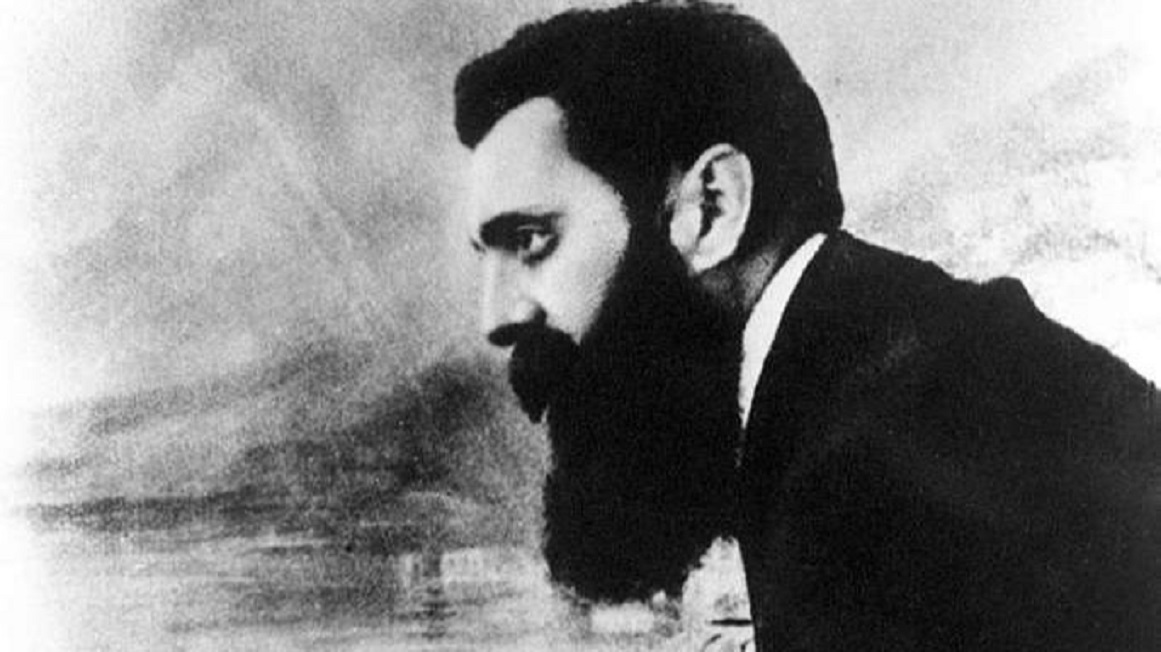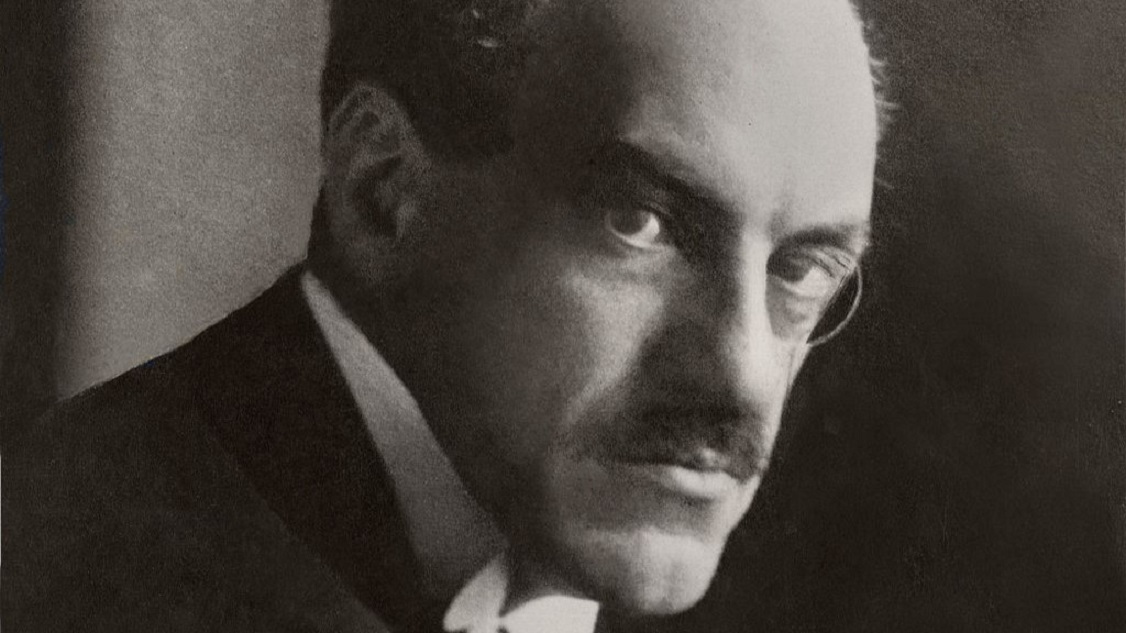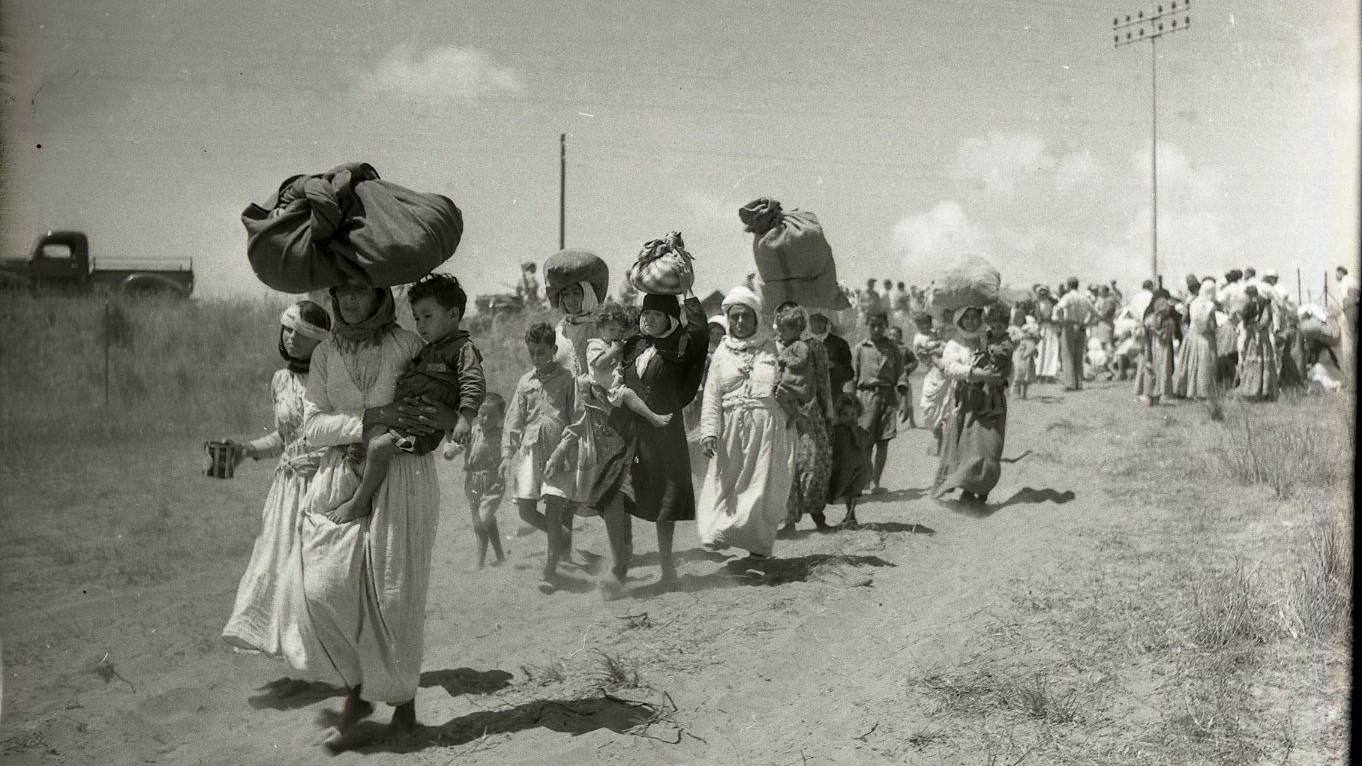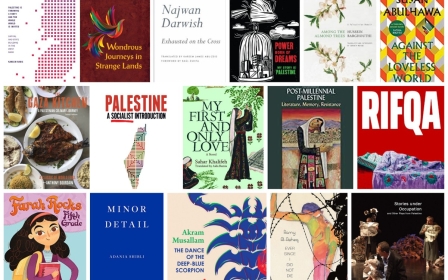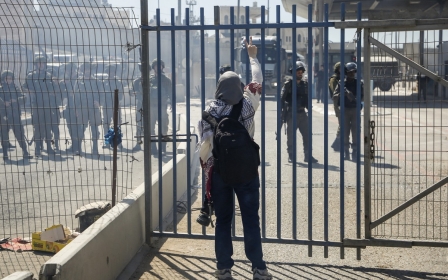Nakba: Essential books explaining the ethnic cleansing of Palestine and creation of Israel

Every year on 15 May, Palestinians mark the Nakba (catastrophe), the ethnic cleansing of Palestine, and the near-total destruction of Palestinian society in 1948.
The Nakba was the national nadir of the Palestinian people. Between 1947 and 1949, Zionist forces seized more than 78 percent of historic Palestine and expelled at least 750,000 Palestinians from their lands and homes.
The events leading up to the establishment of Israel have been mulled over and discussed by Israelis, Palestinians, and academics from across the world for decades now.
While the memory of the Nakba burns strong in the minds of Palestinians, in Israel the issue is rarely discussed in the public sphere and few academics or journalists are willing to do so for fear of censure.
For Israelis, the narrative is one of a return to their native land after thousands of years of exile and persecution.
New MEE newsletter: Jerusalem Dispatch
Sign up to get the latest insights and analysis on Israel-Palestine, alongside Turkey Unpacked and other MEE newsletters
But for Palestinians, the story is about expulsion at gunpoint by Zionist militias backed by the West as well as massacres, such as the ones at Deir Yassin and Tantura.
Today, those expelled and their descendants are still not allowed to return home. For many, exile from Palestine means living in refugee camps dotted across the wider Middle East, often without citizenship or full rights in these new lands.
In that sense, the Nakba continues to this day.
While there is no shortage of books on the topic, the huge choice available can easily overwhelm those who want to understand the issue.
With that in mind, Middle East Eye suggests five books to understand the Nakba.
The list is by no means exhaustive but offers a casual reader a strong foundation in understanding how the Nakba came about and its continued impact on Palestinians.
The Ethnic Cleansing of Palestine by Ilan Pappe
In the 75 years since the Nakba, Israeli writers have offered different explanations for what happened to the Palestinians who lived within the borders of the modern state of Israel. In some versions, they left voluntarily, in others they were never there to begin with, and for others, the question is best left unaddressed.
Israeli historian and University of Exeter academic Ilan Pappe seeks to answer the question definitively in The Ethnic Cleansing of Palestine, his tour de force study of the Nakba.
The book offers an intimate insight into what motivated Zionist leaders at the time by analysing official Israeli documents, Palestinian archives, and notes made by Israeli leaders, amongst other sources.
The conclusion a casual reader can draw from Pappe’s research is that the Nakba was a systemic process, deliberately planned by Israel’s future leaders and not an ad-hoc movement of Palestinians, who during the fog of war found themselves locked out from their homes forever.
From Pappe’s research, we learn that addressing a perceived demographic threat posed by an Arab majority, as well as securing as much territory from Mandate Palestine as possible, were key aims of the Zionist movement.
The book is meticulously sourced and has no shortage of quotes by Israel’s leaders spelling out in cold terms their desire to reduce the Arab population of the mandate, as summarised succinctly in the Haganah militia’s Plan Dalet: “The armed forces must be wiped out and the population expelled outside the borders of the state.”
The Ethnic Cleansing of Palestine is published by Simon & Schuster
Returning to Haifa by Ghassan Kanafani
Also called Return to Haifa depending on the translation used, Ghassan Kanafani’s novella is a touching exploration of the complexities of loss that accompanied the Nakba.
In the book, a Palestinian refugee couple returns to their home in the eponymous city to find it now inhabited by a Jewish couple, a visit made especially difficult by the memory of their infant son, who went missing during the events of 1948.
The son, it transpires, was found by the Israeli couple and raised as their own; named Dov, raised Jewish and serving in the Israeli army to boot.
In denial, and consumed by anger after the revelation, Dov berates his biological parents, blaming their loss on themselves and declaring: “You should not have left an infant in its crib.”
That line transforms Dov into a stand-in for the land of Palestine itself and alludes to the guilt many Palestinians were tormented by for not having remained in their communities in the face of the Zionist advance.
In the end, Dov is left in a state of turmoil with no hint as to whether he will soften his stance towards his biological parents and allow them back into his life; a representation of the position Palestinians found themselves in when Kanafani wrote the story in 1969 and continue to find themselves in today.
Returning to Haifa can be found in the collection titled Palestine's Children: Returning to Haifa and Other Stories, which is published by Lynne Rienner Publishers
The Jewish State by Theodor Herzl
The importance of this book by the founder of the modern Zionist movement lies in its value as a historical document, along with the way it reveals his naive idealism.
When it was first published in 1896, the idea of a Jewish state in Palestine must have been seen as a pipe dream. While there were proto-Zionist settlers within what was then an Ottoman territory, they represented a tiny minority of the region’s overall population made up of indigenous Muslim, Christian, Druze, and Jewish residents.
Herzl saw a pressing need for Jews to have a homeland, in which they would be safe from European antisemitism.
Casual readers will be surprised to find that while Palestine is mentioned as one potential home for the Jewish people, other candidates are also proposed.
Palestine, according to Herzl, was the Jews' “ever-memorable historic home” but Argentina was “one of the most fertile countries in the world, extends over a vast area, has a sparse population and a mild climate".
The text also mentions the British territory of Uganda in central Africa as another option for a state.
But Herzl’s most significant efforts were focused on the acquisition of Palestine, and with that goal in mind he lobbied German diplomats and sought to arrange the purchase of the territory from the Ottoman sultan, a deal to be financed by a consortium of Jewish businessmen.
Of course, the Turks did not entertain the idea. But if they had, what did he think would become of the Palestinian population?
The Jewish State is light in detail but it seems to assume some sort of local agreement would be made with the existing residents who would benefit from the Jewish presence on their land.
Herzl goes into more detail in his novel The Old New Land, in which an Arab serves as a minister in the Jewish State and Jews and Arabs live side by side in Palestine.
But whether this was a cynical attempt to placate concerns about the future of the native population - or an idealistic vision that he genuinely believed in - is up for debate. Herzl died in 1904 aged just 44 before anyone could confirm either theory.
The Jewish State is available to read online for free on Project Gutenburg
The Legacy of Empire by Gardner Thompson
A thoroughly researched and intriguing look at the British role in the lead-up to the establishment of Israel. Gardner Thompson’s work may be one of the lesser-known books on this list, but it is an essential read for anyone looking to understand how the Nakba came about.
Starting with the early streams of Zionism, Thompson identifies the movement set up by Herzl as a fringe movement with a few influential followers.
Luckily for the Zionists, those few included figures like Chaim Weizmann, a chemist and Russian Jewish emigre who earned the admiration of many in Britain’s elite for his role in developing cordite explosives during the First World War.
The aims of such Zionist leaders dovetailed with both antisemites and philosemites within the British establishment.
The former was driven by what Thompson describes as “nimby-ism” (from "not in my back yard"), an approach that preferred that Jews, many of whom had arrived in Britain from eastern Europe, simply moved somewhere else.
The latter group, who were at root antisemitic themselves, were driven by a mixture of Christian fundamentalism and racism towards the Muslim other.
For many Jews in Britain and in Europe, the idea of a separate Jewish homeland, far away from where they lived, strengthened the idea that Jews were not native to their countries and that their loyalties lay elsewhere.
Chief amongst the opposition was the sole Jewish member of the British cabinet, Edwin Montagu, whose eloquent pleas to not concede to Zionist demands fell on deaf ears.
What followed was the Balfour Declaration, and a three-decade-long tragic comedy of errors, in which Britain tried to balance its commitment to the Zionists while placating the Arab population of the mandate.
The Legacy of Empire: Britain, Zionism and the Creation of Israel is published by Saqi
The Hundred Years' War on Palestine by Rashid Khalidi
Palestinian-American historian Rashid Khalidi’s work provides a broad overview of the events leading up to the Nakba and beyond.
Khalidi recounts Herzl’s early correspondence with Palestinian leaders in the late 19th century - including one of his own relatives - and concludes that the Zionist project had colonialism and displacement in mind since its conception.
The book details the slow wrestling away of historic Palestine from its native population during the First World War and its aftermath, which was initially instigated by the British and subsequently involved the League of Nations and later the United Nations.
A key takeaway from the book is that we should not look at the dispossession of the Palestinians solely within the binary of Zionists versus Arabs, but rather as a multilayered process that also involved international actors.
Lucid and comprehensive, the book is an essential account of the Palestinian story.
The Hundred Years' War on Palestine is published by Metropolitan Books
Middle East Eye delivers independent and unrivalled coverage and analysis of the Middle East, North Africa and beyond. To learn more about republishing this content and the associated fees, please fill out this form. More about MEE can be found here.




